Dashain Festival – Greatest Hindu Festival in Nepal
All the Nepalese people celebrate this festival with a greater plethora of entertainment than others. Dashain is a very ancient festival, but the exact beginning of this festival is unknown.
All the Nepalese people celebrate this festival with a greater plethora of entertainment than others. Dashain is a very ancient festival, but the exact beginning of this festival is unknown.
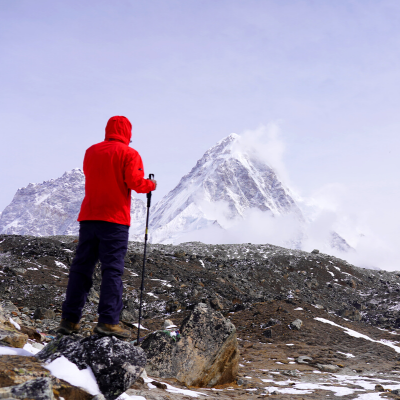
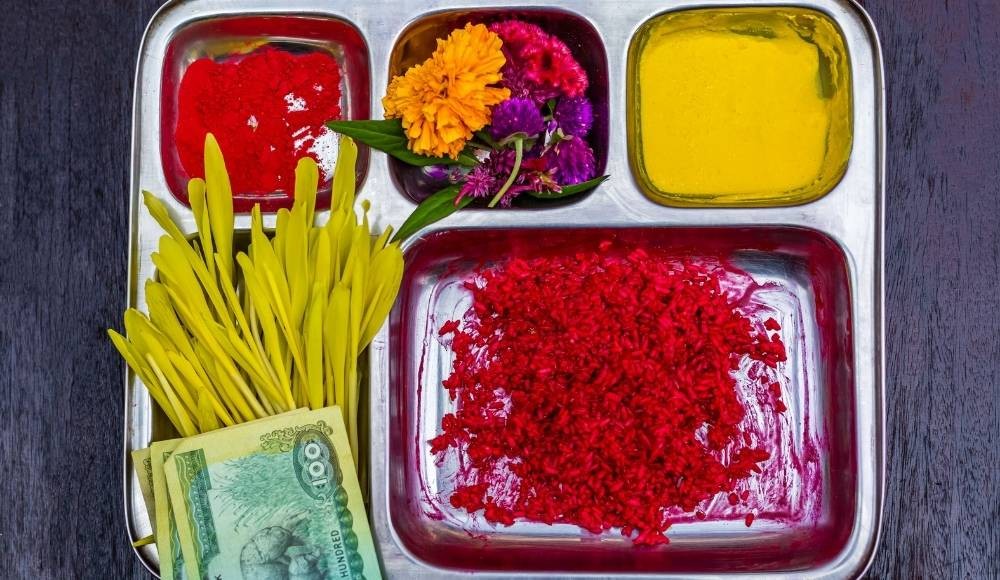
Dashain Festival, also known as Bada Dashain or Vijaya Dashami, is the largest and most significant festival in Nepal, celebrated by Nepalese people of all castes of Hindu communities. The festival usually falls in September or October, depending on the lunar calendar, and lasts for 15 days. Dashain commemorates the victory of good over evil, symbolized by the Hindu gods and goddesses triumphing over demons in various mythological stories.
At its core, Dashain is a time for family reunions, gatherings, and blessings. The festival brings people together as they return to their hometowns and villages to celebrate with their loved ones. The main highlight of Dashain is the tenth day, Vijaya Dashami, when younger family members receive Tika (a mixture of rice, yogurt, and vermilion) and blessings from their elders, symbolizing the transfer of power, strength, and wisdom.
Dashain is also a time for feasting, relaxation, and indulgence, as people prepare various traditional dishes, perform rituals, and engage in festivities. The festival plays a significant role in preserving and promoting Nepalese culture and tradition, both within the country and among the Nepalese diaspora worldwide. For visitors to Nepal during Dashain, it's an excellent opportunity to immerse themselves in the country's rich cultural heritage and witness the vibrant celebrations firsthand.
|
Festival Name |
Bijaya Dashami (Dashain) |
|
Observed by |
Hindus |
|
Festival Type |
Religious/Cultural |
|
Theme |
Victory of Good over Evil |
|
Date |
Ashwin or Kartik Month in BS calendar |
Dashain holds immense significance in Nepalese culture, playing a crucial role in the social, cultural, and religious aspects of life in Nepal. Some of the key ways in which Dashain is significant in Nepalese culture include:
Dashain is deeply rooted in Hindu mythology and beliefs. It commemorates the victory of the gods and goddesses over demons, symbolizing the triumph of good over evil. The festival honors Goddess Durga, who defeated the demon Mahishasura, as well as Lord Rama, who vanquished the demon king Ravana. Dashain is a time for prayer, worship, and ritual observances, reinforcing the spiritual and religious aspects of Nepalese culture.
Dashain is a time for family reunions and gatherings, bringing people together from different corners of the country and even abroad. The festival strengthens family bonds and fosters a sense of community, as people come together to celebrate, share meals, and exchange blessings. This emphasis on togetherness and unity is a cornerstone of Nepalese culture.
Dashain plays a significant role in preserving and promoting traditional practices and customs in Nepal. The festival involves numerous rituals, ceremonies, and practices passed down through generations, ensuring that these cultural elements remain alive and relevant in modern times.
Dashain is a time for relaxation, feasting, and indulgence. People take time off from work, clean and decorate their homes, and prepare special meals to celebrate. The festival marks the end of the monsoon season and the beginning of the harvest season, symbolizing abundance and prosperity. Dashain serves as a reminder to appreciate life, family, and the blessings one has received.
For the Nepalese diaspora living abroad, Dashain plays a vital role in maintaining a connection to their cultural roots. Celebrating the festival in foreign countries helps Nepalese people maintain their unique cultural identity and pass on their traditions to future generations.
Dashain is a multifaceted festival that holds immense significance in Nepalese culture. It serves as a reminder of the triumph of good over evil, reinforces spiritual and religious beliefs, strengthens family and community bonds, preserves and promotes traditional practices, and fosters a sense of cultural identity.
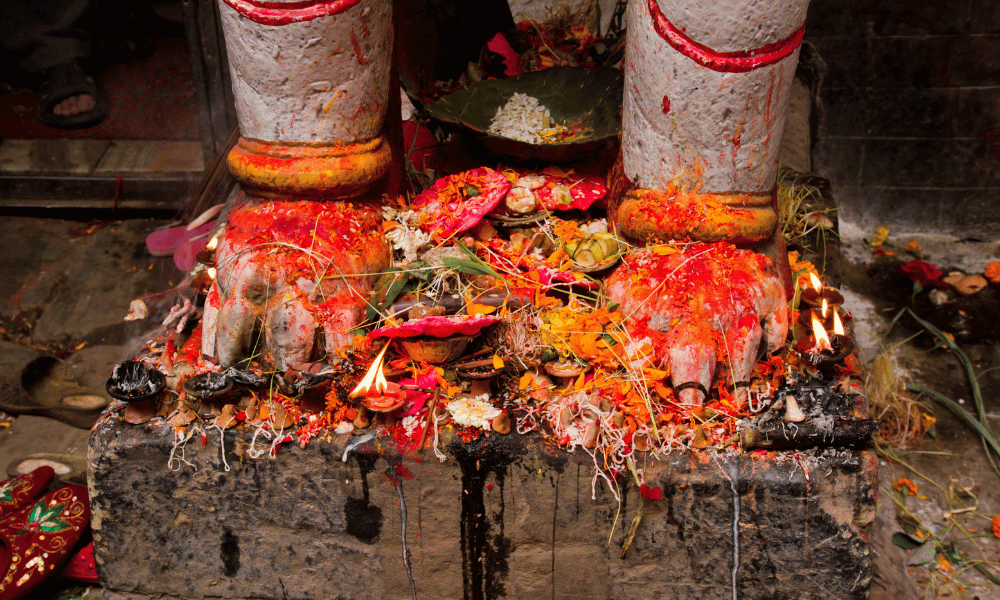
Dashain Festival, based on the lunar calendar, usually falls between late September and mid-October. The exact dates vary each year, as they depend on the position of the moon. The festival lasts for 15 days, with each day having its own significance, rituals, and celebrations.
The main highlight of the festival, Vijaya Dashami, occurs on the tenth day when families come together to exchange blessings and apply Tika (a mixture of rice, yogurt, and vermilion) on each other's foreheads. This period of late September to mid-October is marked by pleasant weather in Nepal, as the monsoon season comes to an end and the winter season has not yet begun. This makes it an ideal time for the festivities and for visitors to experience the vibrant Dashain celebrations in the country.
Dashain Festival is rooted in Hindu mythology and carries both mythological and historical significance. The festival celebrates the victory of good over evil through various stories and legends. The main mythological stories associated with Dashain are:
According to Hindu mythology, a powerful demon named Mahishasura wreaked havoc on earth, causing great suffering and chaos. Unable to defeat him, the gods combined their powers to create the warrior goddess Durga. Armed with divine weapons, Durga engaged in a fierce battle with Mahishasura that lasted nine days and nights. On the tenth day, she emerged victorious, slaying the demon and restoring peace and order on earth. Dashain commemorates this victory, with the first nine days dedicated to worshipping Durga in her various forms and the tenth day, Vijaya Dashami, celebrating her triumph over evil.
Another prominent legend associated with Dashain is the story of Lord Rama and the demon king Ravana. Ravana had kidnapped Rama's wife, Sita, and held her captive in his kingdom of Lanka. With the help of an army of monkeys and the divine intervention of Goddess Durga, Rama waged a war against Ravana. After a fierce battle, Rama killed Ravana and rescued Sita, symbolizing the triumph of good over evil. The victory of Lord Rama over Ravana is also celebrated on the tenth day of Dashain, Vijaya Dashami.
The relevance of these stories in modern-day Dashain celebrations is evident in the rituals, prayers, and festivities that take place throughout the 15 days of the festival. People worship Goddess Durga and seek her blessings, while also celebrating the victory of good over evil. These mythological stories serve as a reminder of the importance of righteousness, perseverance, and the power of good in overcoming adversity.
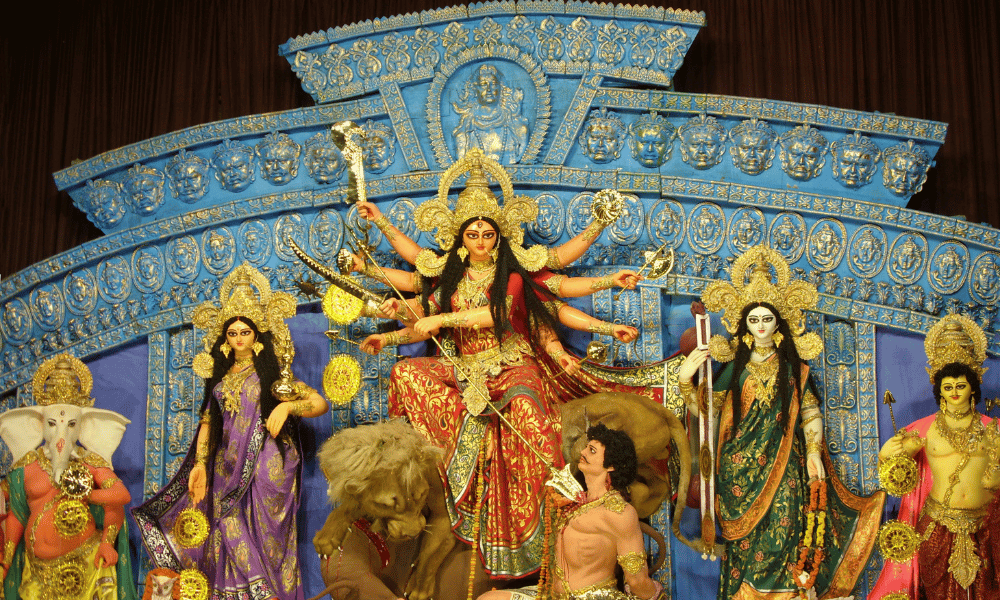
The 15 days of Dashain are filled with various rituals, traditions, and observances, each with its own significance and symbolism. The main days and their associated customs include:
Ghatasthapana (Day 1): The first day of Dashain marks the beginning of the festival. On this day, people perform Ghatasthapana, a ritual in which they set up a small sand and soil altar and sow seeds of barley, wheat, or corn. This sacred planting represents prosperity and is nurtured throughout the festival.
Days 2-6: During these days, people continue to worship Goddess Durga in her various forms, offering prayers, and maintaining the altar where the seeds were sown.
Fulpati (Day 7): Fulpati is the seventh day of Dashain, symbolizing prosperity and abundance. A procession of offerings, including flowers, fruits, and leaves, is brought from the ancestral royal palace in Gorkha to the Hanuman Dhoka palace in Kathmandu. Many households also observe their own Fulpati rituals.
Maha Asthami (Day 8): This day is dedicated to Goddess Kali, a fierce form of Durga. Maha Asthami involves special prayers, offerings, and animal sacrifices in temples and households, seeking Kali's blessings and protection.
Maha Navami (Day 9): The ninth day is dedicated to Goddess Durga and her various manifestations. More offerings and animal sacrifices are made to appease the goddess, as well as to honor the vehicles of various gods and goddesses, such as the elephant, tiger, and bull.
Vijaya Dashami (Day 10): The main celebration day of Dashain, Vijaya Dashami, commemorates the victory of good over evil. On this day, family members gather, and younger ones receive Tika and blessings from their elders. Red, white, and black Tika symbolizes power, purity, and knowledge. This is also the day when many people start new ventures, believing it to be an auspicious time for success.
Days 11-14: During these days, families continue to visit one another, put tika and exchange blessings, and enjoy feasts together.
Kojagrata Purnima (Day 15): The fifteenth and final day of Dashain is called Kojagrata Purnima, which means "the night of awakening." On this day, people worship the goddess of wealth, Laxmi, and pray for prosperity.
Each of the 15 days of Dashain holds unique cultural significance, with various rituals, traditions, and observances that strengthen the bonds between family and community members while celebrating the triumph of good over evil.
Ghatasthapana, which marks the first day of Dashain, initiates the 15-day festival. It is an important day that involves setting up a sacred sand and soil altar, sowing seeds, and invoking the blessings of Goddess Durga. The rituals and customs associated with Ghatasthapana hold great significance in Nepalese culture.
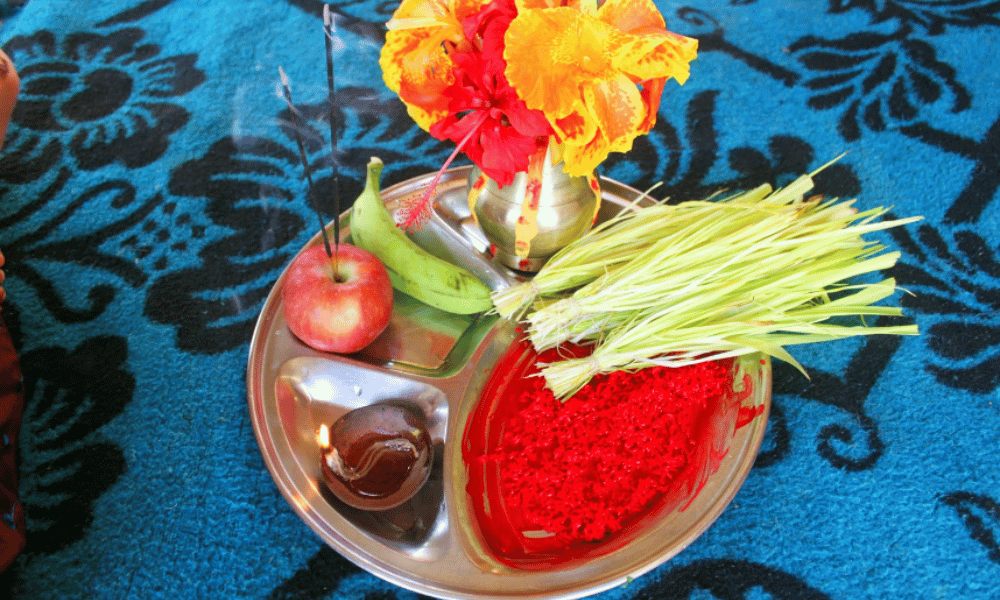
Preparation of the altar: The altar is prepared by placing layers of sand and soil in a designated area of the house, typically in a prayer room or a clean, secluded corner. This layered structure represents the different realms of existence, according to Hindu cosmology. A small clay or metal pot, called a "Kalash," is placed in the center of the altar, filled with holy water, and covered with cow dung. The Kalash symbolizes the vessel of abundance and prosperity.
Sowing seeds: After the altar has been prepared, seeds of barley, wheat, or corn are sown on the surface. These seeds, known as "Jamara," are carefully nurtured throughout the 15 days of the festival. They are sprinkled with water daily and kept in a dark, warm place to facilitate growth. The sprouts that emerge from these seeds represent life, fertility, and prosperity.
Invocation of Goddess Durga: A crucial aspect of Ghatasthapana is invoking the blessings of Goddess Durga. As the divine embodiment of power, strength, and protection, Durga is worshipped throughout the Dashain Festival. The rituals performed during Ghatasthapana include offering prayers, lighting lamps or incense, and reciting mantras dedicated to the goddess.
Astrological considerations: Ghatasthapana is performed at an auspicious time determined by astrological calculations. It is believed that initiating the ritual during this specific time frame ensures the blessings and protection of the goddess throughout the festival.
Ghatasthapana is the starting point of the Dashain Festival and holds great cultural and religious significance. The rituals and customs performed on this day symbolize the beginning of the celebrations, setting the stage for the subsequent festivities, and invoking the blessings of Goddess Durga for a prosperous and joyful Dashain.
Fulpati, the seventh day of the Dashain Festival, is a celebration of prosperity and abundance. This auspicious day is marked by a vibrant procession and various rituals, both at the community level and within households. The customs and traditions associated with Fulpati include:
Fulpati Procession: In the past, the royal family would observe Fulpati by bringing offerings from their ancestral palace in Gorkha to the Hanuman Dhoka palace in Kathmandu. The offerings, collectively known as "Fulpati," include flowers, leaves, fruits, sugarcane, and other elements that symbolize prosperity and abundance. Although the monarchy no longer exists in Nepal, the tradition is still maintained, with government officials participating in the procession.
Household Rituals: Many families across Nepal observe their own Fulpati rituals at home. They prepare a Fulpati assortment consisting of flowers, leaves, and fruits, which they place on their prayer altars. Prayers and offerings are made to the gods and goddesses, seeking blessings for prosperity, abundance, and a successful harvest.
Preparations for Maha Asthami and Maha Navami: As Fulpati marks the beginning of the more intense celebrations that follow, preparations for the eighth and ninth days of Dashain, Maha Asthami, and Maha Navami, commence. People clean their homes, gather ingredients for traditional feasts, and make arrangements for the animal sacrifices and offerings to be made on these auspicious days.
Fulpati is a significant day in the Dashain Festival that represents prosperity and abundance. The rituals, processions, and cultural performances associated with Fulpati serve to strengthen community bonds, showcase the vibrant culture of Nepal, and invoke the blessings of the gods and goddesses for a fruitful and prosperous year ahead.
Maha Asthami, the eighth day of the Dashain Festival, is dedicated to Goddess Kali, a fierce and powerful form of Durga. This day is marked by special prayers, offerings, and animal sacrifices in temples and households across Nepal. The customs and traditions associated with Maha Asthami include:
Worship of Goddess Kali: On Maha Asthami, people worship Goddess Kali, who is believed to embody the destructive power of time and the force that annihilates evil. Devotees offer prayers, light lamps, or incense, and make offerings to the goddess to seek her blessings and protection.
Animal Sacrifices: One of the main rituals performed on Maha Asthami is the offering of animal sacrifices, particularly goats, buffaloes, and chickens. These sacrifices are made in temples and household altars, symbolizing the appeasement of the goddess and the surrender of ego and negative qualities. The sacrificed meat is then cooked and consumed as "Prasad," the blessed food.
Kalaratri or "Black Night" Observance: The night of Maha Asthami is known as Kalaratri, or "Black Night." It is believed that on this night, the goddess Kali descends to earth in her most fierce form to eradicate evil and darkness. To honor this belief, people light lamps, torches, and bonfires, and engage in various religious and cultural activities throughout the night.
Worship of Weapons: As Goddess Kali is the embodiment of power and the destroyer of evil, the weapons used in the battle against evil are also worshipped on Maha Asthami. This ritual, known as "Astra Puja" or "Ayudha Puja," involves the worship of weapons, tools, and equipment used in various professions, seeking blessings for their effective and safe use.
Maha Asthami is an important day in the Dashain Festival, dedicated to the worship of Goddess Kali and the celebration of her power to annihilate evil. The rituals, prayers, and offerings performed on this day serve as a reminder of the constant struggle between good and evil, and the need to seek divine protection and guidance in overcoming life's challenges.
Maha Navami, the ninth day of the Dashain Festival, is dedicated to Goddess Durga and her various manifestations. This day is marked by special prayers, offerings, and animal sacrifices in temples and households across Nepal. The customs and traditions associated with Maha Navami include:
Worship of Goddess Durga: On Maha Navami, devotees worship Goddess Durga in her various forms, offering prayers, lighting lamps or incense, and making offerings to seek her blessings and protection. This day is considered particularly auspicious for the worship of Durga, as it is believed that she grants boons and fulfills the wishes of her devotees.
Animal Sacrifices: Similar to Maha Asthami, animal sacrifices are an important part of the Maha Navami rituals. Goats, buffaloes, and chickens are offered as sacrifices in temples and household altars, symbolizing the surrender of ego and negative qualities. The sacrificed meat is then cooked and consumed as "Prasad," the blessed food.
Vahan (Vehicle) Puja/Bishwokarma Puja: Maha Navami is also associated with the worship of the vehicles of various gods and goddesses. People perform rituals to honor and seek blessings from the divine carriers, such as the elephant (Ganesha's vehicle), the tiger (Durga's vehicle), and the bull (Shiva's vehicle). This practice is believed to ensure safety and protection during travel.
Worship of Tools and Instruments: Similar to the worship of weapons on Maha Asthami, Maha Navami also involves the worship of tools, instruments, and equipment used in various professions. This ritual, known as "Vishwakarma Puja," is performed to seek blessings for the effective and safe use of these instruments in daily life.
Maha Navami is a significant day in the Dashain Festival, dedicated to the worship of Goddess Durga and the celebration of her power to protect and guide her devotees. The rituals, prayers, and offerings performed on this day serve as a reminder of the importance of seeking divine guidance and protection in overcoming challenges and achieving success in various aspects of life.
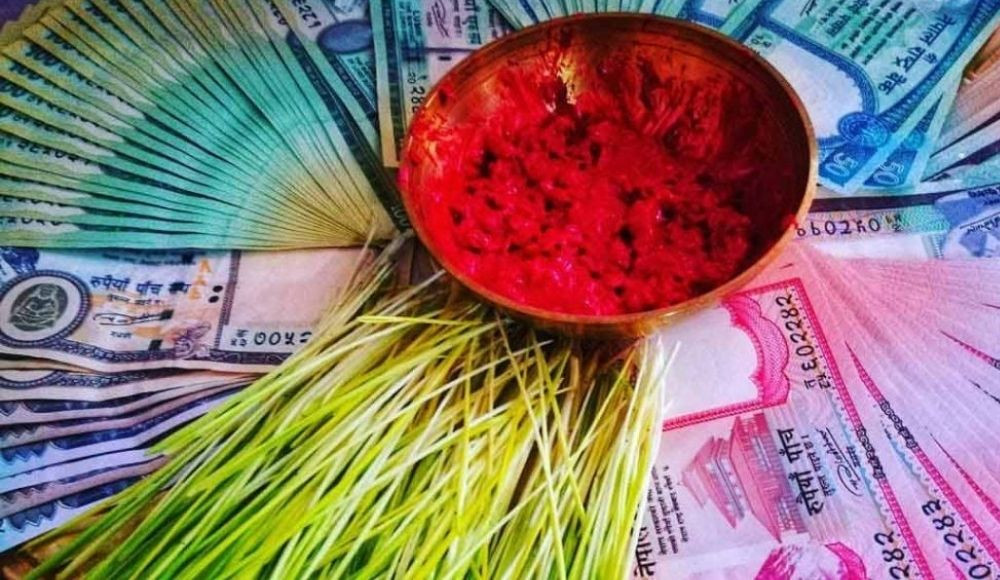
Vijaya Dashami is the tenth day of the Dashain Festival and marks the main day of celebration. It commemorates the victory of good over evil, symbolized by Goddess Durga defeating the demon Mahishasura and Lord Rama vanquishing the demon king Ravana. The day is filled with various rituals, traditions, and festivities that hold great significance in Nepalese culture.
Receiving Tika and blessings from elders: On Vijaya Dashami, family members gather together, and younger members receive Tika from their elders. Tika is a mixture of rice, yogurt, and vermilion, which is applied to the forehead as a blessing. Along with the Tika, the elders give blessings called "Jamara," which are the sprouted barley, wheat, or corn seeds that were sown on Ghatasthapana. The Tika and blessings symbolize the transfer of power, strength, wisdom, and good fortune from the elders to the younger generation.
Family reunions and gatherings: Vijaya Dashami is a time for family reunions, as people travel back to their hometowns and ancestral homes to be with their loved ones. Family gatherings are an essential part of the celebration, with people exchanging greetings, blessings, and indulging in festive feasts. Traditional dishes, such as goat meat, known as "Khasi Ko Masu," are prepared and shared among family members.
Kite flying and cultural programs: In addition to the family-oriented celebrations, Vijaya Dashami is marked by various outdoor activities, such as kite flying, which symbolizes the victory of good over evil. Cultural programs, dance performances, and music events are also organized in communities and cities throughout Nepal, showcasing the rich and vibrant culture of the country.
Auspicious beginnings: Many people believe that Vijaya Dashami is an auspicious day to start new ventures, businesses, or projects. People often initiate important tasks, make significant purchases, or lay the foundation for new constructions on this day, hoping for success and prosperity.
Overall, Vijaya Dashami is the highlight of the Dashain Festival and is celebrated with great enthusiasm and joy. It is a time for family, blessings, and sharing happiness, symbolizing the victory of good over evil and the importance of unity and togetherness in Nepalese culture.
Kojagrata Purnima, the fifteenth and final day of the Dashain Festival, is also known as "Laxmi Puja" or "Sharad Purnima." This day is dedicated to Goddess Laxmi, the deity of wealth, prosperity, and good fortune. The customs and traditions associated with Kojagrata Purnima include:
Worship of Goddess Laxmi: On Kojagrata Purnima, devotees worship Goddess Laxmi by offering prayers, lighting lamps or incense, and making offerings such as flowers, fruits, and sweets. The goddess is believed to visit and bless those who keep their homes and hearts open for her arrival, bestowing wealth, prosperity, and good fortune upon them.
Kojagrata or "Staying Awake": The term "Kojagrata" means staying awake, and on this night, devotees remain awake and engage in various religious, cultural, and social activities. People sing, dance, play games, and share stories, celebrating the blessings of Goddess Laxmi and the completion of the Dashain Festival.
Special Food and Drinks: Kojagrata Purnima is also a time for enjoying special food and drinks. Traditional sweets, such as "Sel Roti" (deep-fried rice flour rings) and "Anarsa" (sweet rice flour fritters), are prepared and shared among family members and friends. A special milk-based pudding called "Kheer" is also prepared and consumed on this night, symbolizing the sweetness and abundance of life.
Kojagrata Purnima marks the end of the Dashain Festival and is a day dedicated to celebrating wealth, prosperity, and good fortune. The rituals, prayers, and offerings performed on this day serve as a reminder of the importance of seeking divine blessings for a prosperous and fulfilling life, as well as expressing gratitude for the blessings already received.
In addition to the main days of the Dashain Festival that have already been discussed, there are other important days and events that hold cultural and religious significance. Some of these days and events include:
Durga Puja and Navaratri: During the entire 15-day Dashain Festival, special attention is given to the worship of Goddess Durga. In particular, the first nine days are dedicated to the goddess, who is believed to embody power, strength, and protection. Devotees visit Durga temples, perform rituals, and make offerings to seek her blessings.
Phoolpati Badhai: Phoolpati Badhai is a traditional practice during the Dashain Festival, where people exchange Phoolpati (flowers, leaves, and fruits) with their neighbors, friends, and relatives. This custom strengthens social bonds and promotes unity and togetherness in the community.
Swinging (Ping): During the Dashain Festival, swings made of bamboo or wood, known as "Ping" or "Linge Ping," are set up in various communities and villages across Nepal. People of all ages, especially children, enjoy swinging on these temporary structures, which symbolize joy, freedom, and the carefree spirit of the festival.
Ramlila: In some parts of Nepal, Ramlila, the dramatic re-enactment of the life of Lord Rama, is performed during the Dashain Festival. This theatrical performance depicts the victory of good over evil, as Lord Rama defeats the demon king Ravana, and is often performed in open grounds or community spaces.
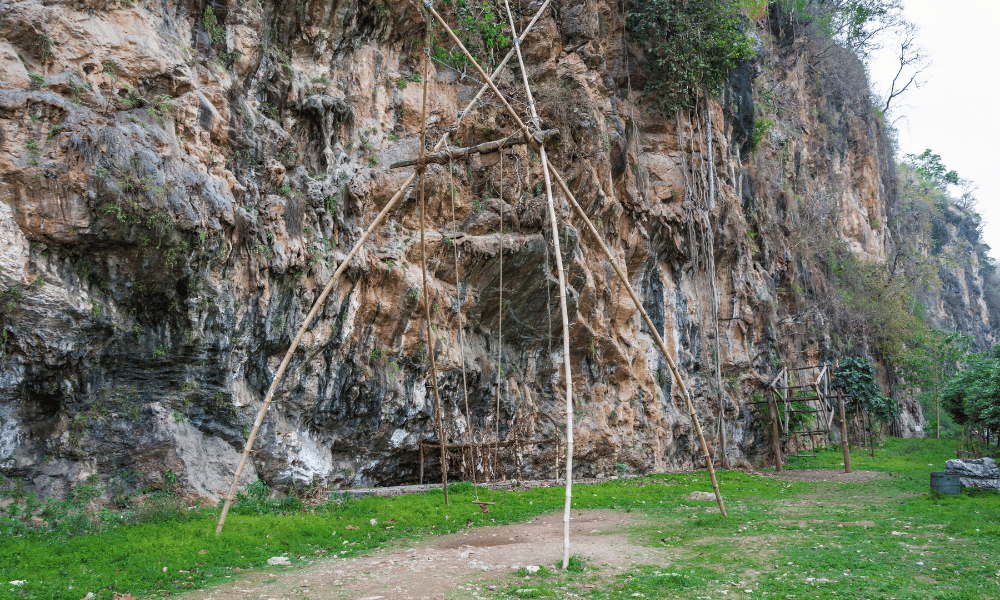
These events and customs, along with the main days of the Dashain Festival, highlight the rich cultural heritage of Nepal and the importance of family, community, and the triumph of good over evil.
Dashain, also known as Vijaya Dashami, is the most significant and widely celebrated festival in Nepal. It holds immense cultural and social importance for the Nepalese people. The festival usually falls in September or October and lasts for 15 days. Dashain is celebrated to honor the victory of good over evil and the blessings of the Hindu goddess Durga, who is considered the embodiment of power and protection.
Religious beliefs: Dashain is deeply rooted in Hindu mythology and celebrates the victory of Goddess Durga over the demon Mahishasura. It also marks the victory of Lord Ram over Ravana, symbolizing the triumph of good over evil. These stories hold significant cultural importance and impart moral values to the Nepalese people.
Rituals and customs: Various rituals and customs are observed during Dashain, such as Ghatasthapana (sowing seeds for Jamara), Kalaratri (animal sacrifices), and Tika (receiving blessings from elders). These practices connect people with their cultural heritage and help preserve their traditions.
Temples and shrines: During Dashain, people visit temples and shrines dedicated to Goddess Durga and other deities to offer prayers and seek blessings. These visits are an integral part of the religious and cultural experience of the festival.
Family reunion: Dashain serves as an occasion for families to come together, reconnect, and celebrate. People living away from their families often return to their hometowns to spend time with their loved ones. This strengthens family bonds and fosters a sense of belonging.
Generational respect: The practice of receiving Tika and blessings from elders during Dashain is a symbol of respect for the older generation. This tradition helps maintain social harmony and teaches younger generations the value of respecting their elders.
Sharing and generosity: Dashain is a time when people share their happiness and prosperity with others. Gifts, clothes, and food are often exchanged among friends, neighbors, and relatives. This fosters a sense of community, generosity, and social cohesion.
Renewal and rejuvenation: Dashain is considered an auspicious time for starting new ventures and cleansing one's mind, body, and soul. People clean their homes, wear new clothes, and participate in various religious and cultural activities, symbolizing renewal and rejuvenation.
Overall, the Dashain festival in Nepal is a celebration of victory over evil, a time for family reunions, and a reminder of the importance of cultural traditions and social harmony. The festival reinforces values such as respect, generosity, and unity, contributing to the preservation of Nepalese culture and fostering a strong sense of community.
Dashain plays a vital role in preserving and promoting Nepalese culture, as it is the most significant and widely celebrated festival in the country. The various customs, traditions, and rituals associated with Dashain contribute to the continuation and appreciation of Nepal's rich cultural heritage. Here are some ways in which Dashain helps preserve and promote Nepalese culture:
Reinforcing cultural values: Dashain reinforces the core cultural values of respect, unity, and the importance of family. The festival promotes these values by encouraging people to come together, spend time with their families, and show respect for their elders.
Rituals and customs: Dashain is marked by a variety of rituals and customs that are an integral part of Nepalese culture. These practices, such as Ghatasthapana, Kalaratri, and Tika, help preserve the traditional ways of celebrating the festival and ensure that cultural knowledge is passed down to future generations.
Storytelling and mythology: The legends and stories associated with Dashain, such as the victory of Goddess Durga over the demon Mahishasura, are important aspects of Hindu mythology. By celebrating Dashain, Nepalese people keep these stories alive and continue to share the cultural significance behind them.
Music and dance: Traditional music and dance are often performed during Dashain celebrations, showcasing the rich cultural heritage of Nepal. The preservation and promotion of these art forms contribute to the continuation and appreciation of Nepalese culture.
Traditional cuisine: Dashain is a time when families prepare and share traditional Nepalese dishes, such as sel roti, masu (meat dishes), and various vegetable curries. The preparation and enjoyment of these traditional foods help maintain culinary traditions and promote Nepalese cuisine.
Arts and crafts: The festival also encourages the creation and appreciation of traditional Nepalese arts and crafts, such as kite-making and thangka painting. These activities contribute to the preservation of traditional skills and knowledge and promote the unique artistic heritage of Nepal.
Tourism and cultural exchange: Dashain attracts many tourists and visitors to Nepal, who are eager to experience the country's rich cultural heritage during the festival. This cultural exchange allows for a broader understanding and appreciation of Nepalese culture and helps promote it internationally.
In conclusion, Dashain plays a crucial role in preserving and promoting Nepalese culture by fostering the continuation of traditions, customs, and rituals, as well as supporting the arts, cuisine, and cultural exchange. The festival serves as a reminder of the importance of cultural heritage and helps maintain the rich tapestry of Nepalese culture for future generations.
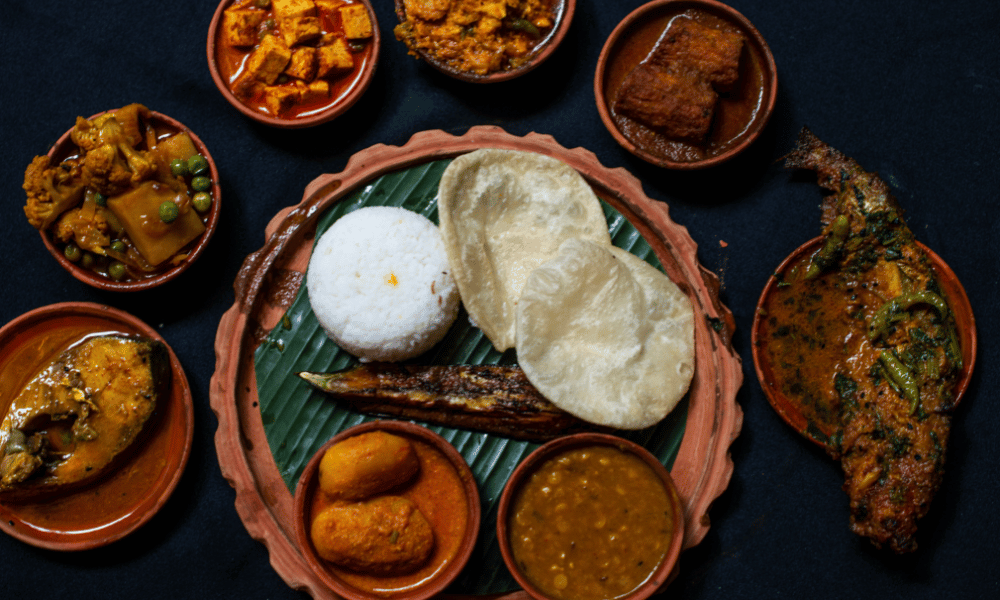
Dashain is a time for relaxation, feasting, and indulgence for the people of Nepal. The festival provides a much-needed break from daily routines, allowing individuals to unwind, celebrate, and enjoy themselves with their families and communities. Here's how Dashain serves as a time for relaxation, feasting, and indulgence:
Time off work: During Dashain, many people take time off work, businesses and schools close for holidays, and the overall pace of life slows down. This break allows individuals to relax, rejuvenate, and spend quality time with their loved ones, away from the stresses of everyday life.
Feasting: Food plays a central role in Dashain celebrations. Families prepare a variety of traditional Nepalese dishes, including meat dishes like mutton, chicken, and buffalo, as well as rice, vegetable curries, and homemade sweets. Feasting is an integral part of the festival and serves as a way for people to indulge in delicious food and enjoy the company of their family and friends.
Sharing and generosity: Dashain encourages people to share their prosperity and happiness with others. Families exchange gifts and invite friends, neighbors, and relatives to share meals and celebrate together. This spirit of generosity and sharing contributes to the festive atmosphere and promotes social cohesion.
Traditional games and entertainment: During Dashain, people engage in traditional games, sports, and other forms of entertainment, such as flying kites, playing cards, or participating in community events. These leisure activities provide an opportunity for people to relax, have fun, and connect with their cultural heritage.
New clothes and adornments: Dashain is a time when people often buy new clothes and accessories for themselves and their family members. Wearing new clothes symbolizes renewal, and it adds to the festive spirit by allowing people to indulge in personal grooming and self-expression.
Spiritual rejuvenation: Many people use Dashain as an opportunity for spiritual reflection and growth. Visiting temples, participating in religious rituals, and offering prayers to deities can provide a sense of inner peace and relaxation during the festival.
Dashain serves as a time for relaxation, feasting, and indulgence for the Nepalese people. The festival offers a break from daily routines, encouraging individuals to enjoy themselves, connect with their loved ones, and celebrate their cultural heritage. The spirit of sharing and generosity, combined with feasting, leisure activities, and spiritual reflection, contributes to the festive and joyful atmosphere that characterizes Dashain.
Dashain is primarily celebrated in Nepal, but its influence extends to neighboring countries and regions with Nepalese diaspora communities around the world. People of Nepalese origin living in countries such as India, Bhutan, Myanmar, and Tibet, as well as those in Europe, North America, and Australia, also celebrate Dashain, keeping their cultural ties alive. Here are some ways Dashain is celebrated beyond Nepal:
India: In India, particularly in states with a significant Nepalese population, such as Sikkim, West Bengal, and Assam, Dashain is celebrated with enthusiasm. In other states, Dashera is celebrated on the same days with just big of an enthusiasm. The festival's customs and rituals are similar to those observed in Nepal, including family gatherings, huge celebrations, and more.
Bhutan: Dashain is celebrated by the Nepalese community living in Bhutan. Although it may not be as grand as in Nepal, people follow traditions such as receiving Tika from elders and preparing special meals during the festival.
Myanmar and Tibet: Nepalese communities in these regions also celebrate Dashain, keeping their traditions alive while living away from their homeland.
Nepalese diaspora: In countries like the United States, the United Kingdom, Australia, and Canada, Nepalese communities often organize Dashain celebrations. These events typically include cultural programs, traditional music and dance performances, and community gatherings. People also follow the rituals of Tika and blessings, as well as preparing and sharing traditional Nepalese dishes.
Cross-cultural influence: In some cases, Dashain celebrations may overlap or blend with local festivals and customs in the host country, creating a unique cultural fusion. For example, the Hindu festival of Navaratri and Dashera, celebrated in India, shares some similarities with Dashain, as both honor Goddess Durga and her victory over evil.
By celebrating Dashain beyond Nepal, Nepalese communities around the world help preserve and promote their cultural heritage. These celebrations provide an opportunity for people to stay connected to their roots, share their traditions with others, and foster a sense of identity and belonging, even while living away from their homeland.
The Nepalese diaspora, comprising people of Nepalese origin living outside of Nepal, has led to the celebration of Dashain in various countries around the world. These celebrations help preserve and promote Nepalese culture, maintain connections to their homeland, and foster a sense of community among diaspora members. Here are some ways the Nepalese diaspora celebrates Dashain around the world:
Community gatherings: Nepalese diaspora communities often organize events to celebrate Dashain together. These gatherings typically take place in community centers, parks, or private homes, where people can come together to participate in rituals, share meals, and enjoy cultural programs.
Cultural programs: Dashain celebrations in the diaspora often include cultural programs featuring traditional music, dance, and performances that showcase Nepalese culture. These events not only entertain but also educate younger generations and non-Nepalese attendees about Nepalese traditions and heritage.
Rituals and customs: Diaspora communities continue to observe Dashain rituals and customs, such as receiving Tika and blessings from elders, performing prayers, and making offerings to deities. These practices help maintain a connection to their cultural roots and pass on traditions to future generations.
Traditional cuisine: Preparing and sharing traditional Nepalese dishes is an essential aspect of Dashain celebrations among the diaspora. Families and friends gather to enjoy festive meals featuring dishes like sel roti, masu (meat dishes), and various vegetable curries.
Connecting with family in Nepal: Dashain celebrations in the diaspora often involve connecting with family members in Nepal through phone calls or video chats. This helps maintain bonds with loved ones and share the joy of the festival despite being geographically distant.
Inclusion of non-Nepalese friends and neighbors: Dashain celebrations in the diaspora often include non-Nepalese friends, neighbors, and colleagues, providing an opportunity to share Nepalese culture and traditions with a wider audience.
Online celebrations: With the growth of social media and online communication, many diaspora communities have turned to online platforms to organize and participate in Dashain celebrations. Virtual gatherings, live-streamed cultural programs, and online Tika ceremonies have become increasingly popular, especially during times when in-person gatherings may not be feasible.
The Nepalese diaspora plays a crucial role in keeping Dashain traditions alive and promoting Nepalese culture worldwide. Through community gatherings, cultural programs, and adherence to rituals and customs, Nepalese people living abroad maintain a strong connection to their homeland, foster a sense of community and belonging, and share their unique heritage with others.
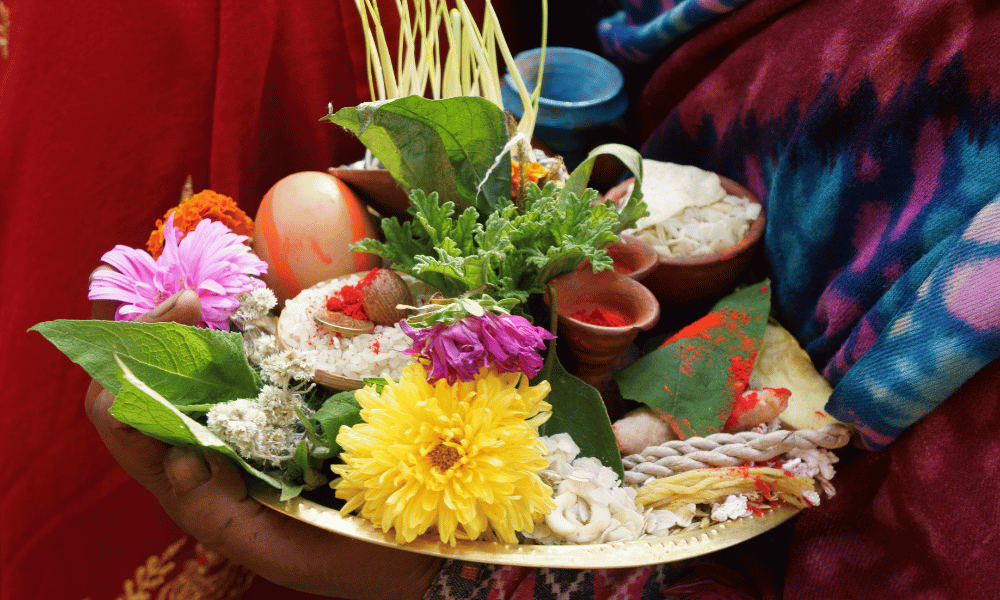
Adapting Dashain traditions to life outside Nepal can be challenging, but it is essential for preserving and maintaining cultural connections among the Nepalese diaspora. Here are some ways to adapt Dashain traditions to life in different countries:
Flexibility with dates and timings: Due to work and school schedules, it may not always be possible for the diaspora to take time off during the entire Dashain festival. In such cases, families and communities can be flexible with the dates and timings, choosing weekends or convenient times to celebrate and perform rituals together.
Simplified rituals: Some Dashain rituals may be difficult to perform in their entirety, particularly those involving animal sacrifices or specific religious items. Adapting these rituals to a simpler form or finding alternative ways to carry out the ceremony can help preserve the essence of the tradition while respecting local laws and customs.
Local ingredients and substitutes: Preparing traditional Nepalese dishes may require ingredients that are not easily available outside Nepal. In such cases, using locally available ingredients or finding substitutes can help maintain the festive spirit while adapting to local resources.
Virtual celebrations: Connecting with family and friends in Nepal or other countries can be done through phone calls, video chats, or social media. Virtual Dashain celebrations can include online Tika ceremonies, sharing photos of celebrations, or even live-streaming cultural events.
Collaborating with local organizations: Partnering with local organizations, cultural centers, or educational institutions can help organize and promote Dashain events. This collaboration can provide resources and support for cultural programs, workshops, or exhibitions, making it easier to celebrate and share Nepalese culture with a wider audience.
Involving non-Nepalese friends and neighbors: Inviting non-Nepalese friends, neighbors, and colleagues to Dashain celebrations can help share Nepalese culture and traditions with others. This exchange fosters cultural understanding and appreciation, promoting a sense of community and inclusivity.
Educating younger generations: Teaching Nepalese children and youth about Dashain, its significance, and the associated rituals and customs is essential for preserving cultural heritage. Parents can share stories, teach traditional songs and dances, and involve children in the preparation of festive meals to pass on their cultural knowledge.
Adapting Dashain traditions to life outside Nepal requires flexibility, creativity, and collaboration. By modifying customs and practices to suit local contexts and resources, the Nepalese diaspora can maintain a strong connection to their cultural roots, foster a sense of community, and share their unique heritage with others.
Food plays a central role in the Dashain festival, as families gather to prepare and share special dishes. The festival's feasting is an integral part of the celebrations and highlights the importance of family, community, and tradition in Nepalese culture. Here are some popular foods associated with the Dashain festival:
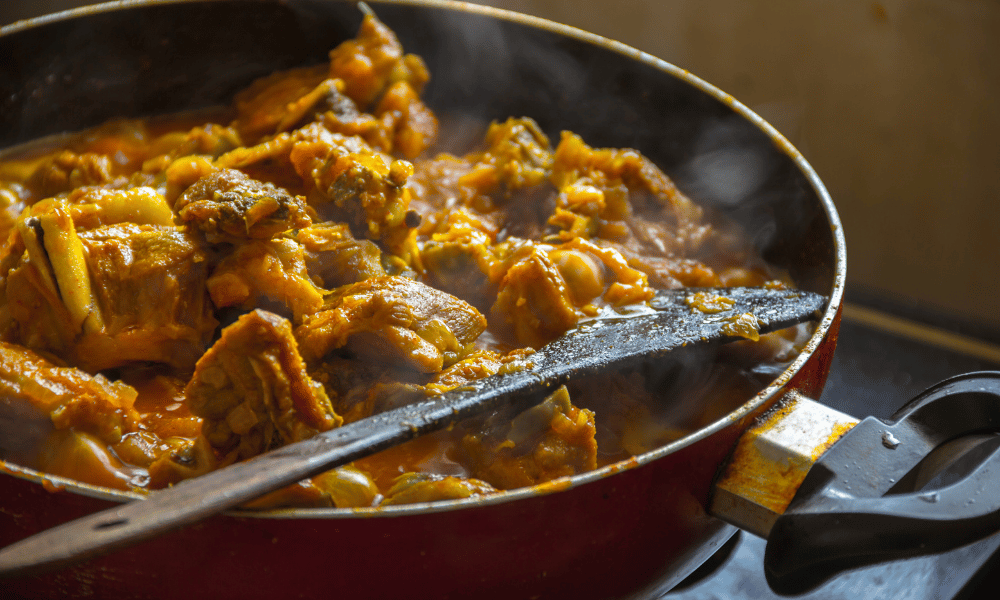
Masu: Meat dishes, particularly goat and chicken, are an essential part of Dashain feasts. Animals are often sacrificed during the festival as an offering to the goddess Durga. The meat is then used to prepare various dishes, including curries, fried meat, and grilled or barbecued items.
Sel Roti: Sel roti is a traditional Nepalese sweet bread made from rice flour. The dough is deep-fried in a ring shape until it becomes crispy and golden. Sel roti is typically served with yogurt, vegetable curry, or meat dishes during Dashain.
Newari Bhoye: The Newari people of Kathmandu Valley prepare a traditional feast called "Bhoye" during Dashain. This elaborate meal consists of various dishes such as beaten rice (chiura), curries, pickles (achaar), leafy greens (saag), lentils, and sweets.
Aloo Tama: Aloo Tama is a delicious Nepalese curry made with potatoes, bamboo shoots, and black-eyed peas. This dish is often prepared during Dashain and other festivals and is served with steamed rice or roti.
Samay Baji: Samay Baji is a traditional Newari platter that includes a variety of food items like beaten rice (chiura), roasted soybeans, spiced meat, boiled eggs, and pickles. It is a popular dish during Dashain and other Newari celebrations.
Kheer: Kheer is a creamy rice pudding made with rice, milk, sugar, and flavored with cardamom, saffron, and nuts. This sweet dish is often prepared during Dashain and other festive occasions.
Fulaura and Bara: Fulaura and Bara are traditional Newari deep-fried lentil cakes made from soaked and ground lentils. Fulaura is made from black lentils, while Bara is made from a mixture of different lentils. These savory snacks are enjoyed during Dashain and other special occasions.
Achaar: A variety of pickles, made from fruits, vegetables, or even meat, are an essential part of Dashain feasts. Achaar adds flavor and spice to the meal and is often homemade using traditional recipes.
During Dashain, families gather to enjoy these delicious dishes together, strengthening their bonds and sharing their cultural heritage. The preparation and consumption of festive foods are an integral part of Dashain celebrations, reflecting the importance of family, community, and tradition in Nepalese culture.
Experiencing Dashain as a visitor to Nepal can be an enriching and memorable experience. The festival offers a unique opportunity to witness Nepalese culture, customs, and traditions firsthand. Here are some tips and suggestions for experiencing Dashain as a visitor to Nepal:
Plan your trip: Dashain usually takes place in September or October, depending on the lunar calendar. Check the dates before you plan your trip to ensure you are in Nepal during the festival. Keep in mind that some businesses and attractions may be closed during this time, so plan your itinerary accordingly.
Engage with locals: The best way to experience Dashain is by interacting with local people. If you have Nepalese friends or acquaintances, consider joining them for Dashain celebrations. Many families would be happy to include visitors in their festivities and share their customs and traditions.
Attend community events: During Dashain, various community events take place, such as cultural programs, traditional music and dance performances, and sports competitions. Attend these events to experience the festive atmosphere and learn more about Nepalese culture.
Visit temples and religious sites: Dashain is a religious festival, and many people visit temples and shrines to offer prayers and worship deities. As a visitor, you can visit these sites to observe rituals and ceremonies. Remember to dress modestly and respect local customs when visiting religious places.
Taste traditional cuisine: Dashain is a time for feasting, and trying traditional Nepalese dishes is a must. Sample festive foods such as sel roti, masu (meat dishes), and various vegetable curries. You can find these dishes in local restaurants or by attending community events where food is served.
Observe and participate in customs: Learn about the different customs and rituals associated with Dashain, such as Tika, blessings from elders, kite flying, and the preparation of traditional meals. If you are invited to participate in any of these activities, be respectful and follow local etiquette.
Learn about Dashain's significance: Familiarize yourself with the stories, myths, and legends associated with Dashain, such as the victory of Goddess Durga over the demon Mahishasura. Understanding the festival's cultural and religious significance will enhance your appreciation of the celebrations.
Be respectful: As a visitor, it's essential to be respectful of local customs, traditions, and religious beliefs during Dashain. Dress modestly, follow local etiquette, and ask for permission before taking photographs of people or ceremonies.
Experiencing Dashain as a visitor to Nepal can provide a unique insight into the country's rich cultural heritage. Remember, as a tourist, it's essential to be respectful of local customs, traditions, and religious beliefs during Dashain. By engaging with the local culture, attending community events, and participating in customs and rituals, tourists can immerse themselves in the festive atmosphere and create lasting memories of their time in Nepal.
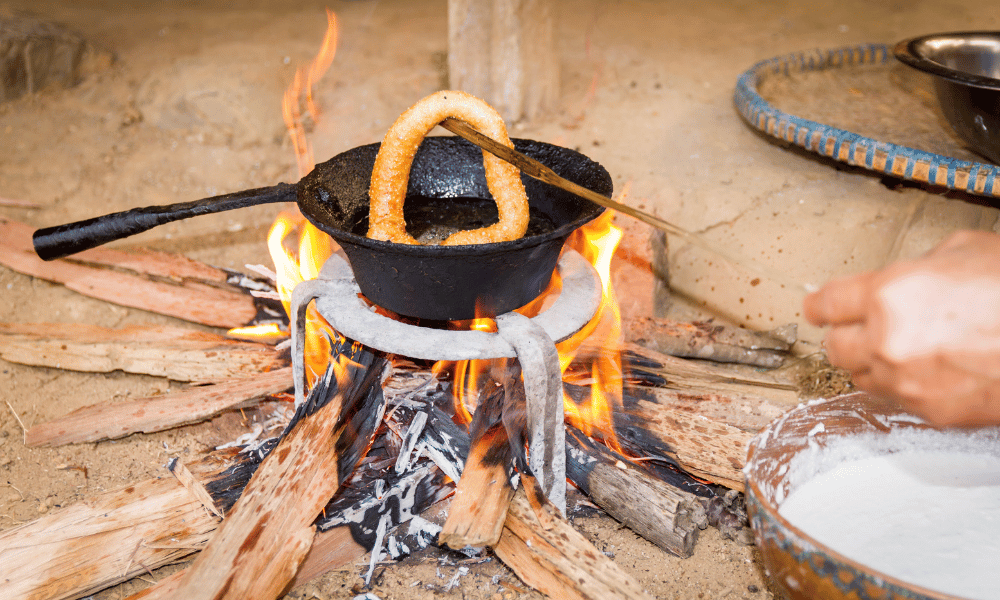
During Dashain, some popular tourist destinations and activities may be less crowded due to the festive atmosphere and locals spending time with their families. However, this can also be a great opportunity to explore Nepal and experience its rich cultural heritage. Here are some popular tourist destinations and activities to consider during Dashain:
Kathmandu Valley: Explore the UNESCO World Heritage sites in the Kathmandu Valley, including Pashupatinath Temple, Boudhanath Stupa, Swayambhunath Stupa, and the ancient Durbar Squares of Kathmandu, Bhaktapur, and Patan. These sites are rich in history and showcase traditional Nepalese architecture.
Pokhara: Don’t miss Pokhara on your trip, a picturesque city located by the Phewa Lake, which offers stunning views of the Annapurna mountain range. You can participate in activities such as boating on the lake, paragliding, visiting the World Peace Pagoda, or exploring the Mahendra and Bat Caves.
Chitwan National Park: Enjoy a safari experience in Chitwan National Park, where you can spot various wildlife, including Bengal tigers, one-horned rhinoceroses, and different species of deer. You can also take part in other activities such as bird watching, canoeing, and visiting the local Tharu villages.
Lumbini: Visit Lumbini, the birthplace of Lord Buddha, and explore the numerous monasteries, temples, and the sacred garden surrounding the Mayadevi Temple.
Bandipur: Discover the charming hilltop town of Bandipur, known for its traditional Newari architecture, and enjoy panoramic views of the surrounding mountains and valleys.
Nagarkot: Take a short trip to Nagarkot, a popular hill station close to Kathmandu, which offers breathtaking views of the Himalayas, including Mount Everest, and beautiful sunrise and sunset panoramas.
Trekking: Although the Dashain festival falls during the start of the trekking season, some popular trekking routes may be less crowded. Consider short treks, such as the Ghorepani Poon Hill Trek, the Langtang Valley Trek, or the Tamang Heritage Trail, which showcase the natural beauty of Nepal and offer stunning mountain views.
Cultural experiences: Attend Dashain community events, including cultural programs, traditional music, and dance performances. Also, explore local markets to shop for handicrafts and traditional clothing.
Mountain flights: If you're short on time or unable to trek, you can take a mountain flight to enjoy an up-close view of the Himalayas, including Mount Everest.
Adventure sports: For thrill-seekers, there are various adventure sports available, such as bungee jumping, zip-lining, paragliding, and white-water rafting.
Keep in mind that some businesses and attractions may be closed or operate for limited hours during Dashain. It is essential to plan your itinerary accordingly and be flexible with your travel plans.
Dashain is the longest and most significant Hindu festival in Nepal, symbolizing the victory of good over evil. The festival holds immense importance in Nepalese society, as it celebrates religious and cultural traditions, strengthens family and community bonds, and provides a time for relaxation and indulgence.
The 15-day celebration is marked by colorful rituals, music, dance, and feasting, making it a vibrant and memorable experience for both locals and visitors. Dashain not only preserves and promotes the rich cultural heritage of Nepal but also brings together people from diverse backgrounds to share and cherish their customs and values.
Experiencing Dashain, either in Nepal or through local Nepalese communities worldwide, is a unique opportunity to immerse oneself in a different culture and create unforgettable memories. By participating in Dashain celebrations, one can gain valuable insights, build connections, and develop a deeper appreciation for the beauty and richness of Nepalese culture.
our first-hand Himalayan travel experience